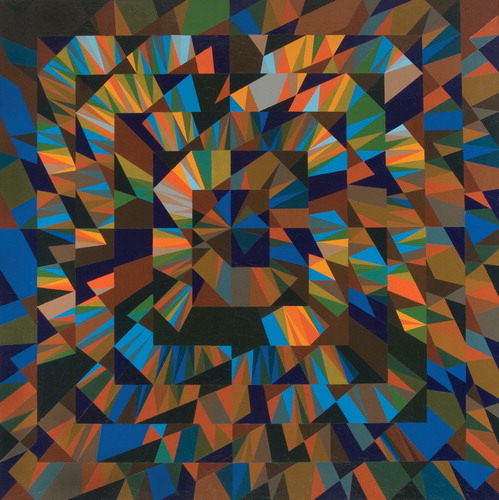Jason Glance
Jason Glance, whose work has graced our pages and covers since he became the Journal ’s graphic designer in 1999, died of colon cancer on August 31 at age 44. At the Journal and throughout APA, Jason was much appreciated for his grace, wit, calm, intelligence, and good nature. He will long be missed.

Many authors knew Jason via e-mail as the polite, concise, talented graphics wizard who could turn any graph, chart, or diagram into a clear, succinct figure in strict Journal format, and of course all subscribers saw his work on the cover each month. The July 1999 cover was the first to have the credit “Cover design by Jason Glance.” His final cover was the May 2008 issue. Throughout the years, many of our contributing authors have cited the collaboration with Jason on creating a striking cover to illustrate or highlight their article as the most enjoyable aspect of their Journal experience.
The cover of this issue features one of Jason’s own paintings. It is a large canvas, occupying 16 square feet, yet even scaled to fit on our cover, it is a dazzling, exuberant work, drawing the viewer in with its strong suggestion of ordered complexity and an ever-present risk of chaos. Readers may recognize the title, “Dance of the Infidels,” from the Bud Powell tune of the late 1940s. Indeed, Jason’s calling was art, but his passion was music, and in his own work he was able to integrate the two, with startling results.

Figure 2. “Dance of the Infidels,” by Jason Glance, acrylic on canvas, 48 in. by 48 in., 1990. Courtesy of Jacqueline Arendse.
In a series of paintings spanning two decades, Jason translated musical performances—specifically, improvised jazz solos from the Bebop era, usually by Charlie Parker—into abstract art. For each painting, Jason first established an armature of sorts, a two-dimensional framework or pattern, usually tessellated, within which music converted to color would flow about the canvas. Within this framework, each musical note is represented by a specific color. The 12 tones of the chromatic scale are arranged in order around a color wheel divided into 12 sections; the notes follow the same color scheme in other octaves but are proportionally lighter for higher octaves and darker for lower octaves. Time is represented by the surface area of a given shard of color. Because the chromatic scale and the hues of the color wheel are assigned in order, the first color/note assignment not only determines all remaining assignments but also necessarily has a fundamental impact on the character of the painting.
Describing what drove this work, Jason once wrote, “Because [Parker’s] music is complex and amazing, I wanted to hold it. I put the music in paint to stop and explore it, to understand what was suggested but went by too quickly in sound. Since the exploration produces a painting and not a graph, it is not enough that a freeze-dried dissection be arranged for clarity; since it is a painting, I want the gestalt of the arranged elements to be soulful, emotional, thrilling.” The more we look at this painting, the more we know he succeeded.



